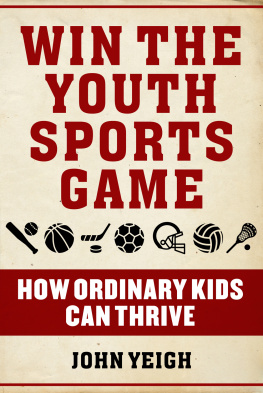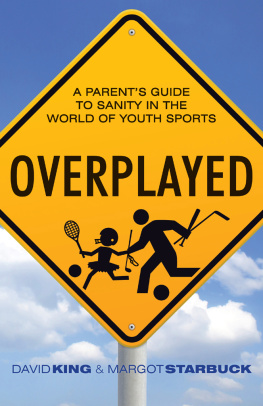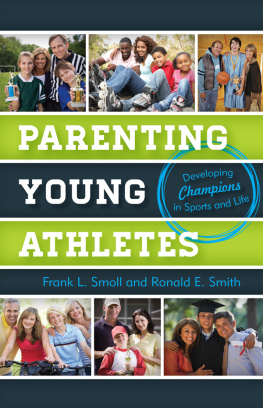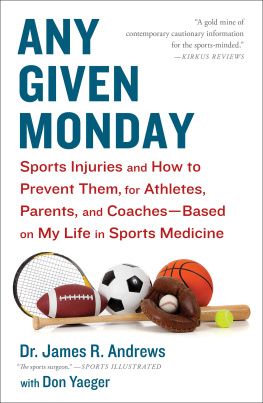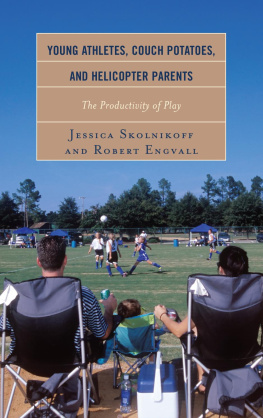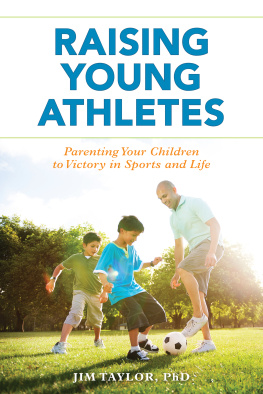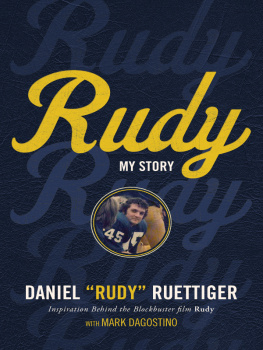Copyright 2002 by Jordan D. Metzl, M.D., and Carol Suen Shookhoff
All rights reserved. No part of this book may be reproduced in any form or by any electronic or mechanical means, including information storage and retrieval systems, without permission in writing from the publisher, except by a reviewer who may quote brief passages in a review.
This book is not intended as a substitute for the medical advice of physicians. The reader should regularly consult a physician in all matters relating to his or her childs health, and particularly with respect to any symptoms that may require diagnosis or medical attention.
In 1934 I coined my own definition for success, which I tried to personally attain and get all my students to attain. It is peace of mind, which is a direct result of self-satisfaction in knowing you did your best to become the best of which you are capable.
T he past fifteen years have seen a youth sports explosion in the United States. Currently, more than 30 million children and teens under the age of eighteen participate in some form of organized sports, and the number keeps rising. Sports are also becoming more competitive. We are seeing kids as young as seven and eight on travel and select teams, playing high-level, competitive sports year-round. For better or worse, the old days of just tossing a ball around in the backyard are gone.
For parents, this phenomenon has created an array of bewildering new questions. Parents and kids know that sports are supposed to be fun, build leadership and social skills, and provide many health benefits. But is there such a thing as too much? How can parents recognize when sports are potentially injurious, and how can they keep participation safe and healthy? How can they ensure that their kids are receiving proper training and coaching and are developing the kinds of positive values that sports are supposed to instill? How can they make certain that sports remain enjoyable, rewarding, and safe; contribute to the overall development of their child, and in general represent value added in the life of their child?
I have written this book to help provide parents with answers to these questions.
The Young Athlete: A Sports Doctors Complete Guide for Parents gives the most current information about safe sports participation for kids. The information is applicable to the young athlete at all levels, from the child just starting peewee sports to the advanced-level high school player contemplating a college career. The book covers both parenting and medical issues. There is also a chapter on development that addresses specific health concerns for male and female athletes.

In many ways, this book is the story of my life.
People often ask me, How did you become a sports medicine doctor? My desire to be a doctor dates back as far as I can remember. Healing others was a way of life in my family. My pediatrician father has always been a role model for me. When I was little, I would visit his office and see how he took care of kids and their families. But when it came time for my own blood tests and immunizations, he literally had to chase me, screaming at the top of my lungs, down the hall. Nonetheless, I found the smell of his office familiar and comforting. My mother is a psychologist who treats teens and their families, helping them explore the issues behind their behavior patterns. Walking down the street in Kansas City, I often run into people who say, Your mom [or your dad] is my doctor. She [or he] is great.
Another prominent force in our family was sports. My parents recount how before I was born, they prepared my one-and-a-half-year-old brother Jonathan to share the limelight with a younger sibling. But when they brought me home, Jonathan took one look at me, waved, and then tried to sit on my head. Two years after I was born, a third son, Jamie, rounded out the first wave of Metzl sons.
With three boys born within four years of each other, testosterone abounded in the Metzl household. Each boy wanted to play well, and in particular, better than his brothers. We competed in everything, from who could draw the best picture to who could hit the most free throws. I remember waking up at seven oclock on Sundays to play cutthroat Wiffle ball in the backyard with my brothers. These games were for glory. Chasing a long fly ball, I once crashed into the woodpile and broke a toe. I remember heated one-on-one basketball games almost every summer evening, played under a halogen light with crickets chirping in the background. Team sports were also important, particularly Little League baseball. Making a good play meant you could walk tall around the house.
My parents didnt want to raise just dumb jocks. They took us to the ballet, opera, and theater; family discussions were more often about politics or books than sports. We all played musical instruments, though I sometimes used my flute as a baseball bat for Nerf-baseball games in my bedroom.
When I was a teenager, my parents decided to have another child. I regarded the little newcomer, Josh, as my sports project. I spent hours teaching him to throw, hit a fastball, shoot a basketball. Josh has just graduated from college, and when we run marathons together he laughs as he speeds past me.
As I grew older, sports continued to shape my life. In college, I played varsity soccer; in medical school, I did triathlons; and in residency, I started running marathons. I needed time on the field as much as in the classroom. Sports and exercise gave me a sense of community with my teammates and the other athletes on campus.
Sports also helped me burn off extra energy so I could study better at night. Many people seem to need to burn off energy in order to concentrate. Maybe thats why athletes tend to do better academically during their sports season. The medical profession cant explain exactly why this is, but its a recognized phenomenon, and I know personally that physical activity makes a huge difference to my mental focus.
As my medical training progressed, I knew I had to find a way to combine my two passions, athletics and medicine. Many people, especially in the highly academic Boston medical community, scoffed at the idea of sports medicine; many considered it lowbrow. But I believed that sports and medicine complement each other. The patients I most enjoyed taking care of were the athletic kids. They came to the Boston clinic where I did my residency saying, I want to get back to sports as soon as I can. Its important for me. I completely understood what they were saying. Plus Id had most of their injuries myself, so I knew exactly how they felt.
After Boston, I got a sports medicine fellowship at Vanderbilt University in Nashville. Here was real sports medicine, behind the scenes of college sports. Before, I had always been on the field as an athlete, working hard to play my best and help my team win. Now I was a doctor, there to make sure that the safest decisions were made for kids playing on all of the sports teams. I had to tell the soccer coach that a player with a concussion could not return to the game, even though the player was eager and willing and so was the coach. The responsibility was sobering. Next I went to Harvard for a second year of sports medicine training, with a focus on adolescents. While there, I interned with the Boston Ballet and learned firsthand about the physical demands of dance, and also about dancers special medical needs, which are different from those of the average athlete.


